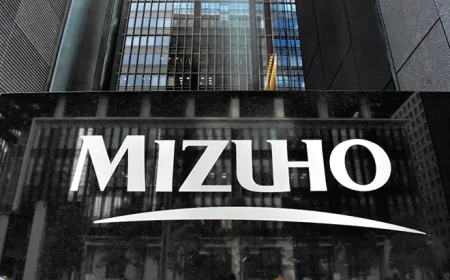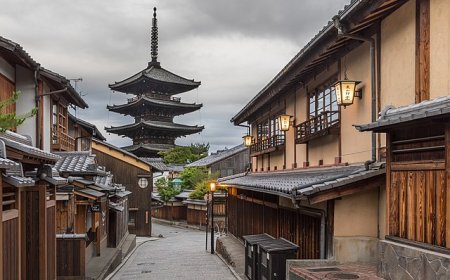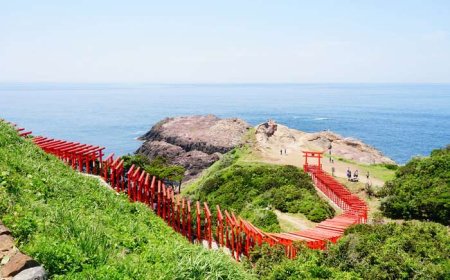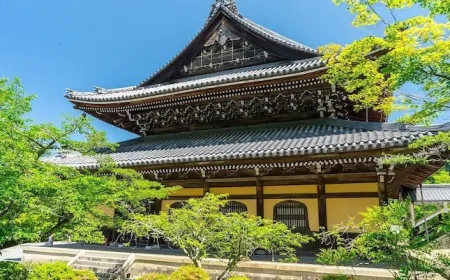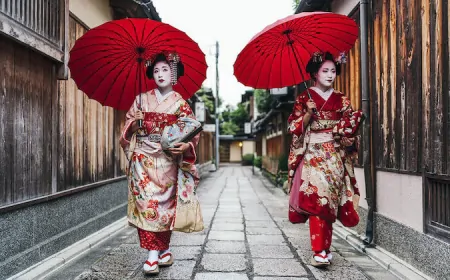Recommend 6 places to visit in Kyoto
In today's post, we will explore 6 places to visit in Kyoto.

1. Heian Jingu Temple
The first place is a sacred place that tourists should visit at the end of the year or at the beginning of the new year to pray for peace for their loved ones - Heian Jingu Temple. The temple was built in 1895, on the occasion of the 1100th anniversary of leaving the capital for Heian. The impressive thing about this place is that the area of the temple gate and the main hall are painted bright red. The entrance to the shrine is marked by a torii gate over 24m high, towering over a four-lane road, making it one of the largest torii gates in Japan.
Heian Jingu Shrine is a place of worship and memory of two emperors, Emperor Kanmu - who moved the capital to Heian, and Emperor Komei - the last emperor before the capital moved to Tokyo. The temple recreates the Chodoin area - the place to receive guests in the imperial city, also where the Emperor lived in the Heian period (794-1185). Currently, the temple still preserves the outstanding architecture of the Heiankyo imperial capital with the Otemon gate (gate to the palace), Daigokuden (the main hall of the court).
Around the temple, there are 4 gardens: East, Central, West and South with a total area of 33,000 m2. This is a garden with a lake design created by the 7th designer Ogawa Jihee. At the garden, visitors can enjoy the beauty of flowers in four seasons, but the most famous is still the cherry blossoms in spring.
More information:
Address: Nishitennochi, Okazaki, Sakyo, Kyoto
Phone: 075-761-0221
Opening hours: 6:00 - 18:00
Website: http://www.heianjingu.or.jp/
2. Fushimi-Inari-taisha Shrine with 1000 Torii gates
The next famous suggestion that visitors have probably heard about, which is known as the mysterious tunnel - is the road with more than 1,000 bright orange-red Torii gates stretching, which is the temple. Fushimi-Inari-taisha shrine. Legend has it that the temple was founded in 711 before Kyoto became the capital of Japan. Of the more than 35,000 shrines across Japan dedicated to the god Inari, Fushimi-Inari-taisha is recognized as the great shrine.
A special highlight is the trail surrounding the shrine, located underneath thousands of Torii gates. According to the Japanese concept, the Torii gate is considered as the gateway to the world of the gods, a landmark. transitional space between the mortal world and the spiritual realm. In addition, red (or orange) is the color of the sun, symbolizing absolute power, eternity and good things (like the flag of Japan). As a result, the gates with their distinctive red color just kept increasing, dedicated to the shrine by meritorious people and businesses, becoming a very unique feature of the legendary Fushimi Inari Taisha shrine, where The imprint of the harmony between Shintoism and Buddhism has existed for thousands of generations. Currently, it is estimated that there are not only 1,000 Torii gates, but this number has reached 10,000. If you notice, on the pillars of the gate are engraved names and remember the contributions of the people who donated.
Another symbol of the Temple that visitors come across are the numerous fox statues. Foxes are considered messengers of the god Inari and the statues often hold a key in their mouths. This is considered the key to open the rice warehouse or the jewel symbolizing the spirit of the gods.
More information:
Address: 68 Fukakusa, Yabunouchicho, Fushimi, Kyoto
Phone: : 075-641-7331
Cost: Free admission
Opening hours: 6:00 - 18:00
Website: http://inari.jp
3. Nishiki Market
Nishiki Market is known as "Kyoto's kitchen", because visitors will be able to enjoy hundreds of traditional dishes here, from main dishes to desserts, breakfast, food. There are too many options for tourists to choose from. Nishiki Market is actually an open-air fish market, open and operating more than 400 years ago.
The bustling, bustling scene is the atmosphere that we can feel. Restaurants and shops are located close together, extending in a narrow aisle of about 1,500m. This is what makes visitors even more overwhelmed by hundreds of shops and the number of dishes is really too much and too attractive.
More information:
Address: 609 Higashiya, Nakagyo, Kyoto
Website: http://www.kyoto-nishiki.or.jp/about.html
Phone: 075 311 3882
4. Hear New Year's Eve bells at Chionin Temple
Chionin Temple is the head temple of the Judo sect, which is said to have originated from the founder of the Jodo sect - Honen, who built Thao Am in Yoshimizu Nochi in 1175. The main Meido hall is the place to worship the saint Honen, This building was destroyed by fire but was later rebuilt by Tokugawa Iemitsu. Besides, the Sanmon gate was also built in 1621 by Tokugawa Hidetada, this is the largest wooden double gate (double gate) in Japan with a height of 24m, a width of 50m, and using a total of 70,000 tiles. .
If tourists visit the temple at the end of the year, or on New Year's Eve, especially at the time of the New Year's transfer, you should be "quick" because you may have to wait in line for a long time to hear the bell ring. hit up. Starting at 20 pm, the temple will be open to welcome people who come on New Year's Eve to pray. At 22:30, people will line up if they want to witness the famous bell-ringing ceremony here. At 23 o'clock, the temple gate will be closed and will not accept more visitors. In particular, each turn, only 300 people will be allowed in to avoid jostling and pushing when ringing the bell.
Chionin Temple's giant bronze bell weighs 70 tons, and was cast in 1636 during the Edo period. Bells will begin to ring around 10:40 a.m. on New Year's Eve. Because of the "terrible" weight of the bell, not only one but 17 monks can join forces to hit the bell 108 times. So why not 3 bells like other temples but 108 times? Because in the Buddhist concept, people are born with 108 earthly desires that make them miserable, ringing the bell 108 times in the hope of releasing and eliminating the above desires.
The process of ringing the bell will take place in a certain sequence. 17 people will correspond to the position of 17 ropes surrounding the bell so that everyone can control and ring the bell. One monk will hang upside down, clutching the thickest rope, located at the center of the bell, while the rest will yank the rope around to control the wooden lobe - called shumoku.
The location to monitor the ringing process is definitely in the center, next to the fence blocking the bell. But if the spot is too crowded and you can't squeeze in, there's a second spot for you to watch - either side of the bell edge, behind where 16 monks pull ropes that control the lobes.
More information:
Address: 400 Hayashishita-cho, Higashiyama-ku, Kyoto
Phone: 075-531-2111
Cost: 300 yen/person
Time: 9:00 - 16:30
Website: https://www.chion-in.or.jp/
5. Watch the sunrise at Kyoto Tower
When arriving in Kyoto, located in the center of the city is the image of the prominent Kyoto tower with a white body, with a height of up to 131m - also the tallest building in Kyoto. The tower officially opened in 1964 and is considered one of the pioneering designs. The image that we can think of is the shape of the tower like a lighthouse. When night falls, that lighthouse holds an important task - illuminating the whole city of Kyoto.
Visitors will be more surprised when visiting the interior of the tower. This place is fully equipped with hotels, restaurants, food shops, souvenir shops, ... You can find some famous shops such as Kyoto Tower Sand - which sells a variety of souvenirs, from high-end furniture. supply to popular goods, cosmetics and some other specialties.
The most attractive and expected thing is probably the observation room from the top floor, where we can zoom in and cover the view of Kyoto city below, and Osaka city in the distance. Around the observation room are giant transparent glass windows, along with a system of telescopes, detailed information boards about locations below the city.
The time to see the most beautiful and ideal city is probably when dawn knocks on the door. On the occasion of the new year, the whole city will be more brilliant with countless billboards and large advertising screens to welcome spring, all buildings are decorated with brighter light colors. Feel the space for yourself when the new day knocks on the door, when the morning sun rays shine in turn, adding the spring atmosphere that is overflowing on every street, every street.
More information:
Address: 721-1 Higashi-Shiokoji, Karasuma, Shimokyo, Kyoto
Phone: 075-361-3215
Time: 9:00 - 21:00
Cost: 770 yen/person
Website: https://www.kyototower.net/
6. New Year's Prayer at Kitano Tenmangu Shrine
Kitano Tenmangu Shrine was built in 1670 after people spread a mystical story about Sugawara no Michizane - a scholar and politician of the early Heian period. He was a man of outstanding talent, became an effective minister of the lord, but was later exiled to Dazaifu island in Kyushu due to being harmed and blamed for a serious crime, then died there. After Michizane's death, many natural disasters such as thunder, floods and fires occurred consecutively. People began to speculate about a curse, to reassure the people, the court built his temple and that is the legend about the history of Kitano Tenmangu Shrine.
Because this place is dedicated to Sugawara no Michizane - who is revered as the god of learning, every exam season, the temple becomes more crowded than ever. When spring comes, 400 cherry blossom trees in the temple grounds bloom again, especially, among them there are more than 50 species of cherry blossom trees of rare varieties. Because of that, the New Year is also a time when not only domestic people, but also tourists choose this place as a stopover, praying for a peaceful and happy new year.
After praying, don't forget to enjoy the taste of the old, soft Awamochi cake filled with red bean paste. Finally, take your time to choose the colorful Omamori charms for your loved ones!
More information:
Address: Bakuro, Kamigyo, Kyoto
Phone: 075-461-0005
Time: 5:00 - 18:00
Website: https://www.kitanotenmangu.or.jp/
Related Products




![【ふるさと納税】[PROEVO] アルミスーツケース フレームキャ...](https://thumbnail.image.rakuten.co.jp/@0_mall/f405221-oki/cabinet/07205886/ay_sku/ay-s0027_00.jpg?_ex=128x128)


![【ふるさと納税】スーツケース [PROEVO-AVANT] フロントオー...](https://thumbnail.image.rakuten.co.jp/@0_mall/f405221-oki/cabinet/07205886/ay_sku/ay-s0005_00_v2.jpg?_ex=128x128)
